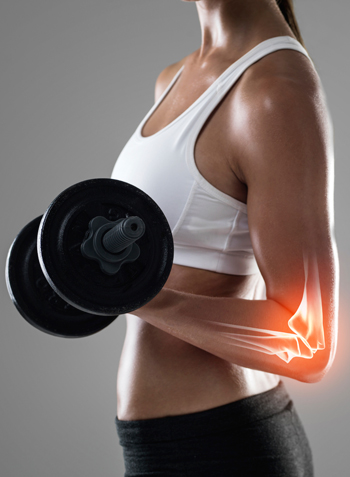…Healthy bones matter.
 You may have missed National Osteoporosis Awareness & Prevention Month in May. But, healthy bones are something to celebrate for the rest of your life. Summer is a good time to help your accounts help their patients stay bone healthy as well.
You may have missed National Osteoporosis Awareness & Prevention Month in May. But, healthy bones are something to celebrate for the rest of your life. Summer is a good time to help your accounts help their patients stay bone healthy as well.
Failing to maintain healthy bones – and avoid osteoporosis, or low bone mass and porous bones – can lead to breaks, particularly of the hip, spine and wrist. Not only are these serious complications of osteoporosis, they are expensive as well. Osteoporosis is responsible for 2 million broken bones and $19 billion in related costs every year, according to the National Osteoporosis Foundation. By 2025, experts predict the disease will be responsible for approximately 3 million fractures and $25.3 billion in costs each year.
The facts about osteoporosis
Osteoporosis is a disease of the bones that occurs when one loses too much bone, makes too little bone, or both. As a result, the bones become weak and may break from a minor fall. In more serious cases, bones can break from simple actions, like sneezing or bumping into furniture. About 54 million Americans have osteoporosis and low bone mass, notes the National Osteoporosis Foundation. Studies suggest that approximately one in two women and up to one in four men age 50 and older will break a bone due to osteoporosis.
Some risk factors, such as the following, cannot be controlled:
- Being over age 50
- Being female
- Menopause
- Family history of osteoporosis
- Low body weight/being small and thin
- Broken bones or height loss
Other risk factors are controllable:
- Calcium or vitamin D deficiency
- Diet lacking in fruit and vegetables
- Diet high in protein, sodium and caffeine
- Inactive lifestyle
- Smoking
- Excessive alcohol consumption
- Weight loss
In addition, certain diseases and medications (e.g., too much thyroid hormone) can also increase one’s risk of osteoporosis.
Preventing bone loss
Osteoporosis medications range from bisphosphonates to hormone-related therapy and other medications. Regular exercise, a calcium-rich diet and calcium supplements can also slow down bone mass loss. According to the Mayo Clinic, men and women between the ages of 18 and 50 need 1,000 milligrams of calcium a day. This daily amount increases to 1,200 milligrams when women turn 50 and men turn 70. The Institute of Medicine recommends that total calcium intake, from supplements and diet combined, should not exceed 2,000 milligrams daily for people older than 50.
Vitamin D improves calcium absorption into the body. Often people get adequate amounts of vitamin D from sunlight, but depending on where one lives, or if one regularly uses sunscreen, this is not necessarily true. While researchers have yet to determine the optimal daily dose of vitamin D, the general recommendation for adults is 600 to 800 international units (IU) daily, through food or supplements. If one’s blood levels of vitamin D are low, the doctor may suggest higher doses. Teens and adults can safely take up to 4,000 international units (IU) a day.
In addition to improvements to one’s diet and adding vitamins and supplements, exercise can be instrumental in helping build strong bones or slow bone loss.
Mayo recommends combining strength-training exercises with weight-bearing exercises. Strength training helps strengthen muscles and bones in the arms and upper spine, and weight-bearing exercises – such as walking, jogging, running, stair climbing, skipping rope, skiing and impact-producing sports – affect mainly the bones in the legs, hips and lower spine.
While low-impact exercises, such as swimming, cycling and exercising on machines such as elliptical trainers provide a good cardiovascular workout, they are not considered as helpful for improving bone health as weight-bearing exercises are.
As the weather continues to warm up, and people spend more time outdoors, there is greater opportunity for exercise. It’s also a good time for distributor sales reps to remind their accounts to educate their patients about taking preventive steps now.